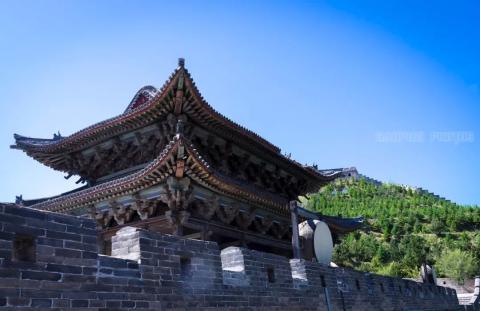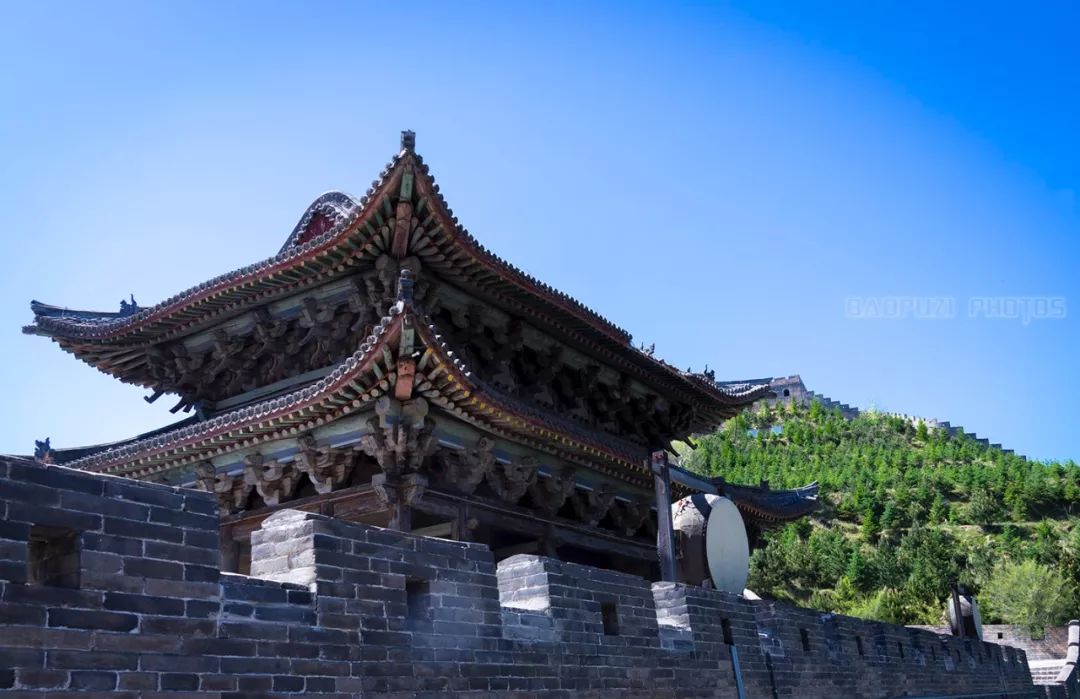
To review, one of the hurried tours is a courtyard - the Wang Family Courtyard; the second is a temple - Jinci; the third is a city - the ancient city of Pingyao. Today, I hurriedly walked to talk about one pass: Yanmen Pass.
An old saying goes: There are nine fortresses in the world, and Yanmen is the first.

To talk about the importance of Yanmen Pass, we must first talk about Shanxi. Shanxi overlooks Guanzhong, Hebei, and Henan in terms of terrain, so it occupies a pivotal position in the entire northern region. This favorable terrain of mountains and rivers allows Shanxi to attack from three sides when advancing, and to defend itself when retreating. Looking at the interior of Shanxi, geographically, the Hengshan Mountains separate the Datong Basin in the north and the Xinding Basin in the south. The mountains narrow where they connect with Luliang and Yunzhong Mountains, making it easier to pass. The mountains here are dangerous and can be controlled by setting up barriers. To the north and south, Yanmen Pass is located here.


According to this connection, one can go north to Datong, an important town in northern Shanxi, and then go as far as the Mongolian Plateau; go south to Taiyuan, an important town in central Shanxi, and capture Taiyuan; go east from Taihang to reach the Central Plains; and cross the Yellow River to the south to reach Guanzhong.

Historically, an important channel for nomads outside the Great Wall to invade China was from the Yinshan Mountains into the Datong Basin. The mountains in the north of the Datong Basin are low and gentle, making it easy for northern nomads to invade and occupy. Therefore, in the history of China, the Yanmen area acted as a barrier. It became important and became the frontline of the battle between the Chinese nation and the northern nomads, such as the Liao and Song Dynasties. In terms of defense, this is the throat of the Three Jins. If Yanmen falls, Taiyuan will be in danger. If Taiyuan falls, the Central Plains and Guanzhong will be shaken.
During the Anti-Japanese War, the Japanese army's march in Shanxi also followed this idea. On the Chinese side, the Battle of Pingxingguan, the Battle of Xinkou, and the Battle of Taiyuan in the Battle of Taiyuan were a series of defensive operations carried out by the Japanese army on this front line.



Yanmen Pass has not always been important. For example, for the Ming Dynasty, Shanhaiguan was much more important; for the Southern Song Dynasty, Xiangyang was much more important. For Yanmen Pass, it mainly has a vital strategic position for the Northern Song Dynasty.

The importance of Yanmen Pass mainly stems from AD 936~938. Later Jin Dynasty Shi Jingtang ceded the Sixteenth Prefecture of Yanyun to Khitan.






A large part of Yanyun Sixteen Prefectures is mountainous. These mountains were originally the northern barrier of the Central Plains regime. With the loss of such a piece of land, half of the entire northern defense line collapsed (important passes such as Juyong Pass and Shanhaiguan Pass were almost lost). Yanyun Sixteen Prefectures were almost completely lost. Once the state is lost, Yanmen Pass is located on the national border and is the first line of defense in the north of the Central Plains regime. As soon as Yanmen Pass is breached, the northern nomadic cavalry marches straight in and can penetrate the entire Shanxi almost immediately (of course Taiyuan can still be rescued) ), and then you can drive your troops from the northeast to Baoding and Beijing, or go all the way south and enter the Central Plains from Luoyang. Once Shanxi is captured, the Central Plains will be flat and almost impossible to defend.

Yanmenguan Scenic Area has a completely new look after it was newly renovated in 2011. Although this kind of antique development is quite controversial, it also helps to improve the tourism experience. The entire Yanmen Pass scenic spot consists of three parts: the antique market outside the pass, the gate tower and government office inside Yanmen Pass, and the Yang Temple in the south of the pass. Among them, the Guanwai Antique Market has over-exaggerated its scale for the development of commercial streets, which is worth complaining about. The other two parts have been repaired and rebuilt, and the experience is pretty good.
